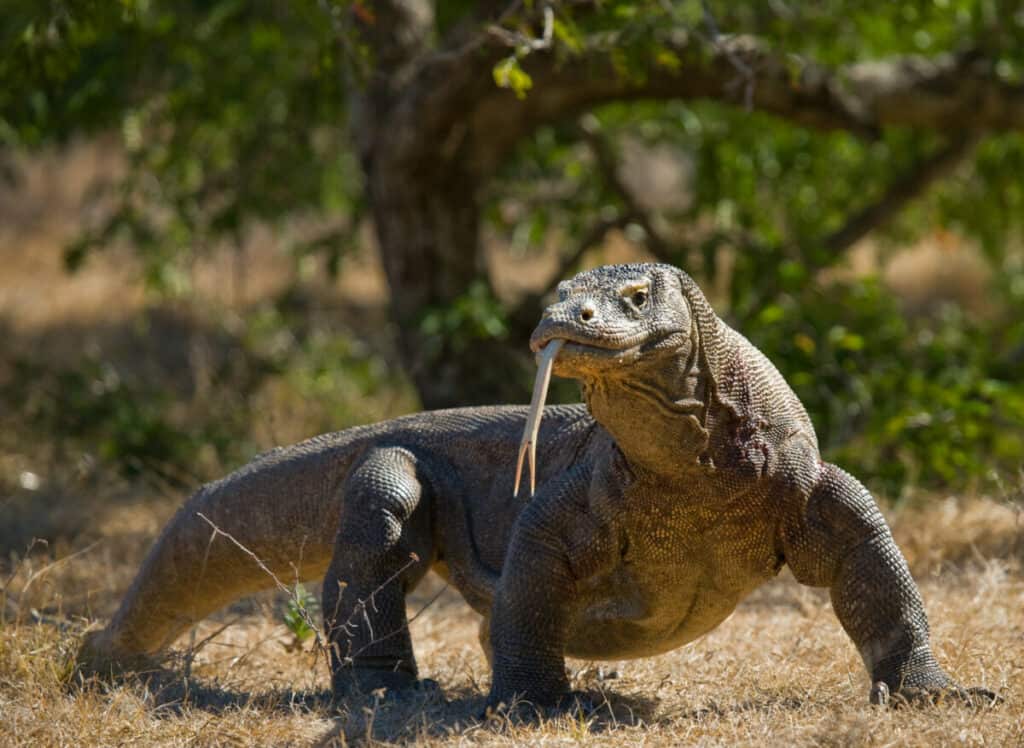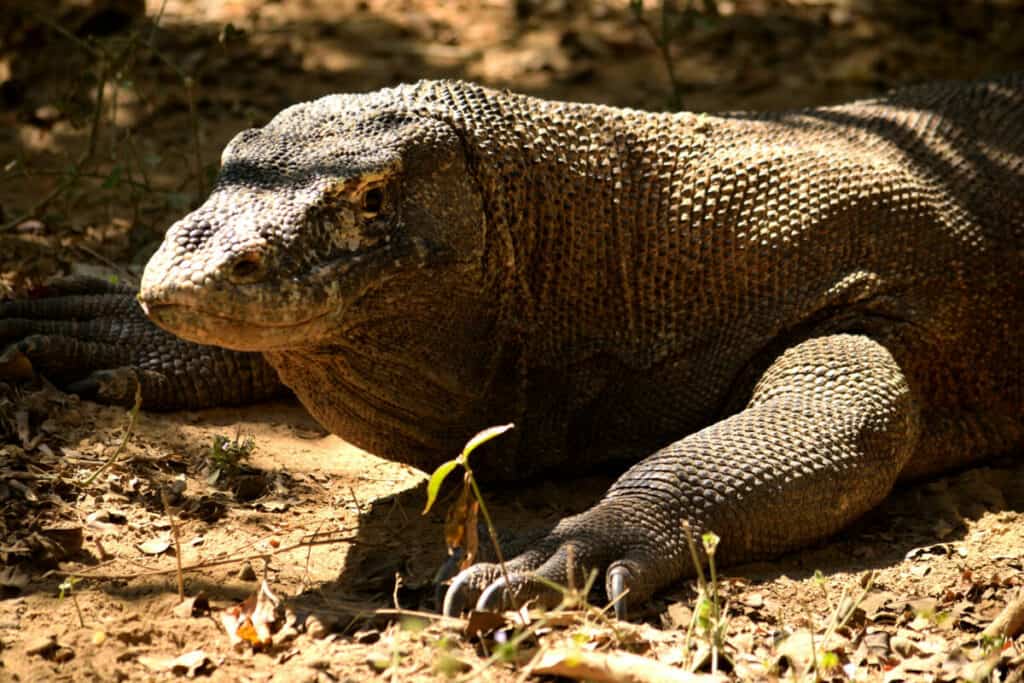
You’ve probably seen a Komodo dragon on TV or maybe in a zoo and thought they were quite interesting. These animals are the largest lizards in the world, sometimes growing up to several meters long. So, you may be wondering; can Komodo dragons climb trees?
Only some Komodo dragons can climb trees. Younger komodo dragons are able to use their claws to climb trees to avoid predators. Older Komodo dragons, however, are too long and heavy to climb trees successfully. Young Komodo dragons sometimes hide in trees to avoid older Komodo dragons.
If you want to learn more about these lizards that have inspired many monsters and stories, keep reading.
Why Komodo Dragons Climb Trees
As we said above earlier only the younger Komodo dragons are able to climb trees. Komodo dragons are a type of monitor lizard, the largest type in fact. Some species of monitors love to spend a large portion of their lives climbing trees. Komodo dragons, however, only climb trees when they are babies and juveniles.
Once hatched, the dragons weigh at most 100 grams and are under 16 inches long. Komodo dragons are considered to be apex predators when fully grown, but at this size, they are vulnerable to other predators.
To avoid these predators, the young lizards climb nearby trees using their sharp claws and tails to grip the trunk. Once in these trees, they can hide from predators. Their most common predator is other Komodo dragons.
Yes, the main predator that Komodo dragons face is other Komodo dragons. The adults will feed on any young dragons that they find. To avoid their older komodo dragons, the younger ones will scurry up the trees, out of reach of the larger adults who cannot climb up after them.
Young Komodo Dragons Can Climb Trees To Hunt For Food
They also climb trees in order to hunt prey. The younger komodos diet consists mostly of insects of various types, small lizards, snakes, and birds. Many of these can be found nesting or hiding among the treetops. During the day, they can shelter from the blazing tropical sun among the foliage. As the dragons grow larger, they are less vulnerable to predators and begin feasting on larger prey.
At five years old they can weigh 50-60 pounds and be 2 meters long. At this time their diet is filled with larger prey. Bigger animals like monkeys, rodents, goats, wild boars, and deer make up their diet. Sometimes, a Komodo dragon will eat these animals whole.
By unhinging their jaws and secreting large amounts of saliva, they are able to swallow whole animals at a time. Sometimes, to help speed up the process, the Komodo dragons will hammer the other end of their meal against a tree or other object to force it down their throat. They have been known to topple trees this way. At this point, they will be too large to climb trees.
Are Komodo Dragons Dangerous?
Looking at a Komodo dragon, you can tell that they are predators. Mature adults can weigh hundreds of pounds and are several meters long. They typically grow larger throughout their lifespan, which is around 30 years, and some dragons have been described as weighing up to 360 pounds. Not only can they bring down and eat an entire animal by themselves, but they are also known to be aggressive and cannibalistic.
Despite all of these things, Komodo dragons are not very dangerous to humans. Of course, you would not want to get bitten or attacked by one of these giant lizards. There is a variety of speculation about how dangerous a bite from one of these lizards is. Some researchers believe that their saliva carries bacteria that can cause infection in wounds. Others claim that the dragon uses venom when it bites its prey.
In records from the Komodo National Park, there have been less than 25 recorded attacks in the park on humans by Komodo dragons. Only a handful of these attacks (5) were fatal. If you are ever bit by a Komodo dragon it might be unpleasant, but as long as you receive medical attention quickly, there is a very good chance you will survive.
That said, their ability to inflict serious damage to humans should not be undermined. They have killed humans and could easily take off small limbs. On top of that, Komodo dragons can run up to 13 miles per hour.
Are Komodo Dragons Endangered?

Komodo dragons are only found in nature in a handful of places around the world. All of these locations are in Indonesia with the dragons being found on four islands in the country, the islands being Komodo (hence their name), Rinca, Flores, and Gili Motang.
Other than these islands, there is no other place in the world where you can see a wild Komodo dragon. To preserve these islands they are all part of a World Heritage Site, the Komodo National Park. Their website lists several details about the area and the goal of the park.
The first thing is that there is an estimated 5700 Komodo dragons living within the park. This number helps to explain why Komodo dragons are considered to be an endangered species. Along with the low number of them found in the wild, the fact that they are only found on this small cluster of islands means that they are vulnerable to encroachment on their territory by other animals and humans.
By listing this area as a World Heritage site, they hope to limit the misuse of the Komodo’s natural territory.
There are two main threats by humans affecting Komodo dragons. The first is the cutting back of foliage for farmland and using the foliage as a building material. With this foliage removed from their islands, the Komodo dragons have fewer places to shelter from the sun. They also will find it more difficult to stalk prey unseen without the cover provided by plants and trees.
According to Ciofi, when this happens the “Komodo dragons are among the first species to disappear.” Ciofi continues by explaining that these cuttings can be limited by encouraging farm plants that can grow under tree canopies and the use of other materials like bricks in construction instead of wood.
The second threat is the poaching of deer and other animals that are the Komodo dragon’s primary prey. The creation of the heritage site allows the Indonesian Government to better enforce the boundaries where you are allowed to hunt and fish around these islands. The park limits access for hunters it allows the wildlife, and by extension, the Komodo dragons to thrive.
Adult Komodo dragons may not be able to climb trees, but they do need trees to survive.
